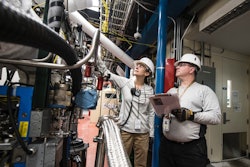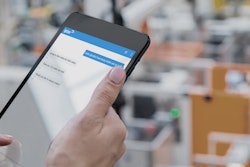
The Coronavirus disease (COVID-19) pandemic has hit global supply chains hard. Consumer fear has led to the hoarding of everything from toilet paper to bottled water, and merchants can’t keep up. Just look at the empty shelves at Target, CVS and other big-name retailers.
The Consumer Packaged Goods industry is ramping up production, and some retailers have responded by limiting purchases of high-demand items. Businesses in these sectors shouldn’t wait for the emergency to calm down to evaluate what they should do to plan for, and mitigate against, future supply chain disruptions.
The solutions that have worked in the past – increasing inventory, adding capacity at different locations and diversifying suppliers – may reduce risk. But those tactics are just scratching the surface when it comes to having a truly resilient supply chain.
Only one-quarter of CPG companies have embraced at least one digital solution
The coronavirus crisis could be a tipping point in the transition to digital platforms and applications that help establish an interconnected network of supply chain components. In a digital supply chain, every activity is able to interact with one another in near real-time, allowing for greater connectivity between areas that previously did not exist.
While other sectors are further ahead in truly embracing digital, CPG is somewhat behind the curve. Despite all the talk about digital transformation, the penetration of key technologies throughout the CPG supply chain – from product development to manufacturing to consumer management – remains superficial.
We recently assessed adoption rates of six current and emerging digital solutions – artificial intelligence (AI), machine learning (ML) and big data; blockchain; Internet of Things (IoT); cobots; geospatial analysis; and digital twin. Our research found that only one in four CPG companies have embraced at least one digital solution across one or more components of their supply chains.
The early adopters, however, are demonstrating the value of these technologies. Procter & Gamble for example uses digital platforms, underpinned by AI, ML, big data and IoT, that help automate supply chain planning. Traditional planning tries to match demand with supply for the next 30 days. The problem with this process is that a lot of things can change in a month, or even a week. Storms may delay deliveries. Retailers may want to do special promotions to coincide with a high-profile sports event. A supplier glitch or product shortage may come into play without forewarning.
Today’s fast-moving markets spurred P&G to take a new look at demand planning. The company’s planners are now supported with machine learning algorithms that automatically adjust demand plans for new product launches, changes in stocking strategies or seasonal shifts. The aim is to improve productivity and accuracy, and free planners from cumbersome, often manual tasks.
The digital tools allow P&G to do demand planning for products like Tide multiple times a day, according to a Forbes article about the company’s supply chain planning. This sort of agility can open new opportunities and save companies significant money. Our market intelligence shows that digital tools can automate 80% to 90% of supply chain planning.
Getting the most out of lean manufacturing
Many CPG companies have adopted the lean philosophy of efficient manufacturing that grew out of the Toyota Production System in the mid-20th century, but digital technologies can help unlock the full potential of lean programs in product development and supply chain management.
One of the principles of lean manufacturing is just-in-time production. This strict inventory management system eliminates the waste of excess inventory by ensuring that only the minimum amount of stock is warehoused and items are only ordered and received when necessary for a sales order.
Case studies about the successful implementation of lean principles bring up the usual suspects – Nike, Intel and John Deere, for example – but I see that there is still a lot of room for improvement at companies looking to benefit from the genius of lean programs.
Rather than replacing lean, digital tools are helping identify new efficiency opportunities in the supply chain. One example is the better use of data analytics and machine learning for inventory management.
Other companies are testing Internet of Things technologies, such as GPS and RFID devices, that make it easier to identify and track items in warehouses and stores – capturing real-time data on variables like temperature and humidity in facilities, as well as speed of delivery. Our research shows that digital technologies can help reduce inventories by up to 75%, while still allowing suppliers and customers to find the right product at the right time.
Other benefits that can be achieved through a digital supply chain include:
● 50% to 75% reduction in lost sales
● 30% lower supply chain administrative costs
● 30% reduction in logistics costs
● 3% to 5% increment in annual earnings growth before interest and taxes
The need for better-informed decision making
The Coronavirus outbreak will force companies that have been slow to adopt digital tools to reconsider the benefits. The crisis demonstrates the need for accurate, real-time information that can help businesses make better-informed decisions. While many disruptions can be beyond a manager’s control, companies can still prepare for them. Reconfiguring supply chains doesn’t always improve the flow of information if silos still exist.
Disruptive risks require investment in additional supply chain resilience even though the gains and ROI may not be immediate. Companies should be considerate of the time required for a digital solution to be implemented and stabilize before it starts reaping benefits.
The journey to a digital supply chain will not always be easy. But successful organizational change, much like social change, can be influenced by the people and capabilities around us – be that stakeholders within your business or supply partners – as well as how external intelligence and internal data are leveraged to make better business decisions.




















